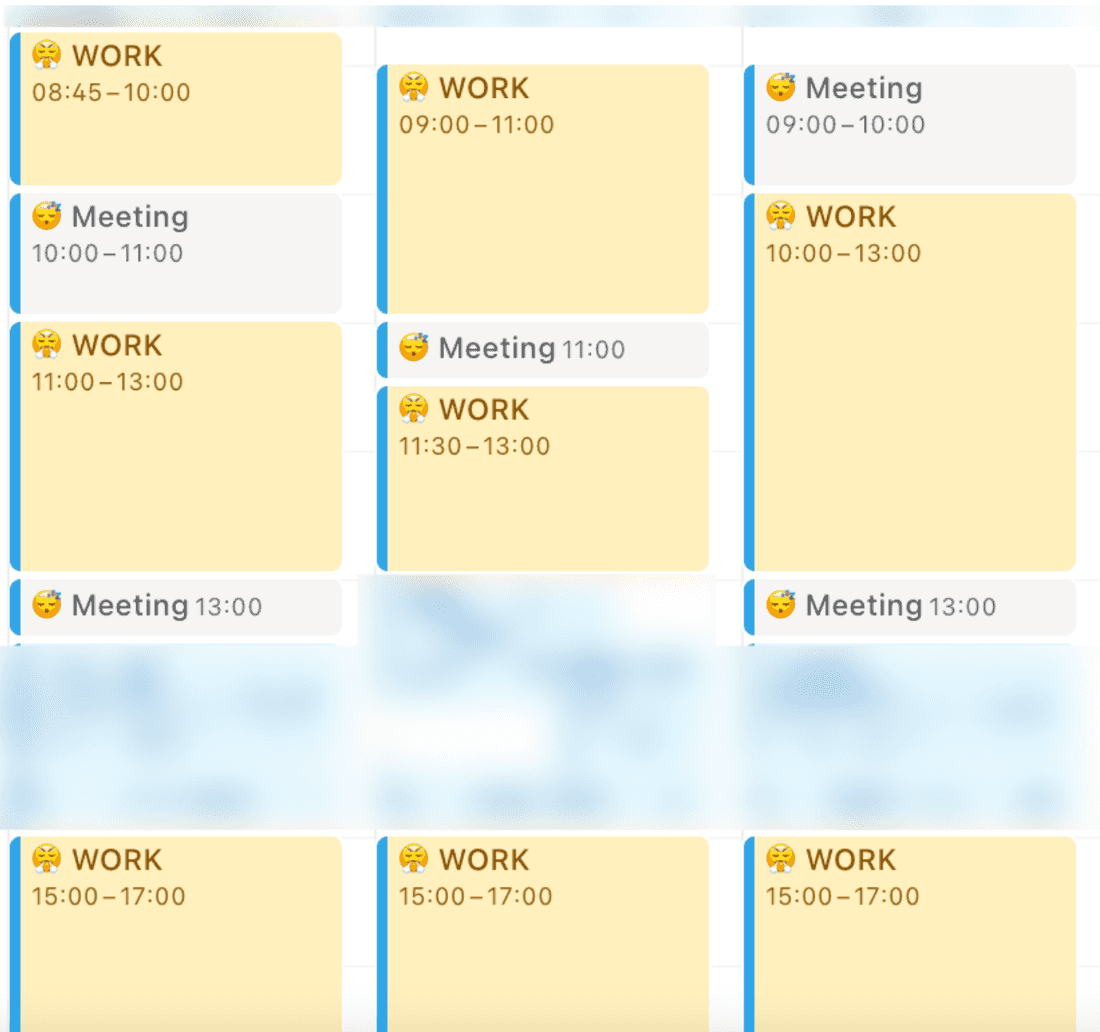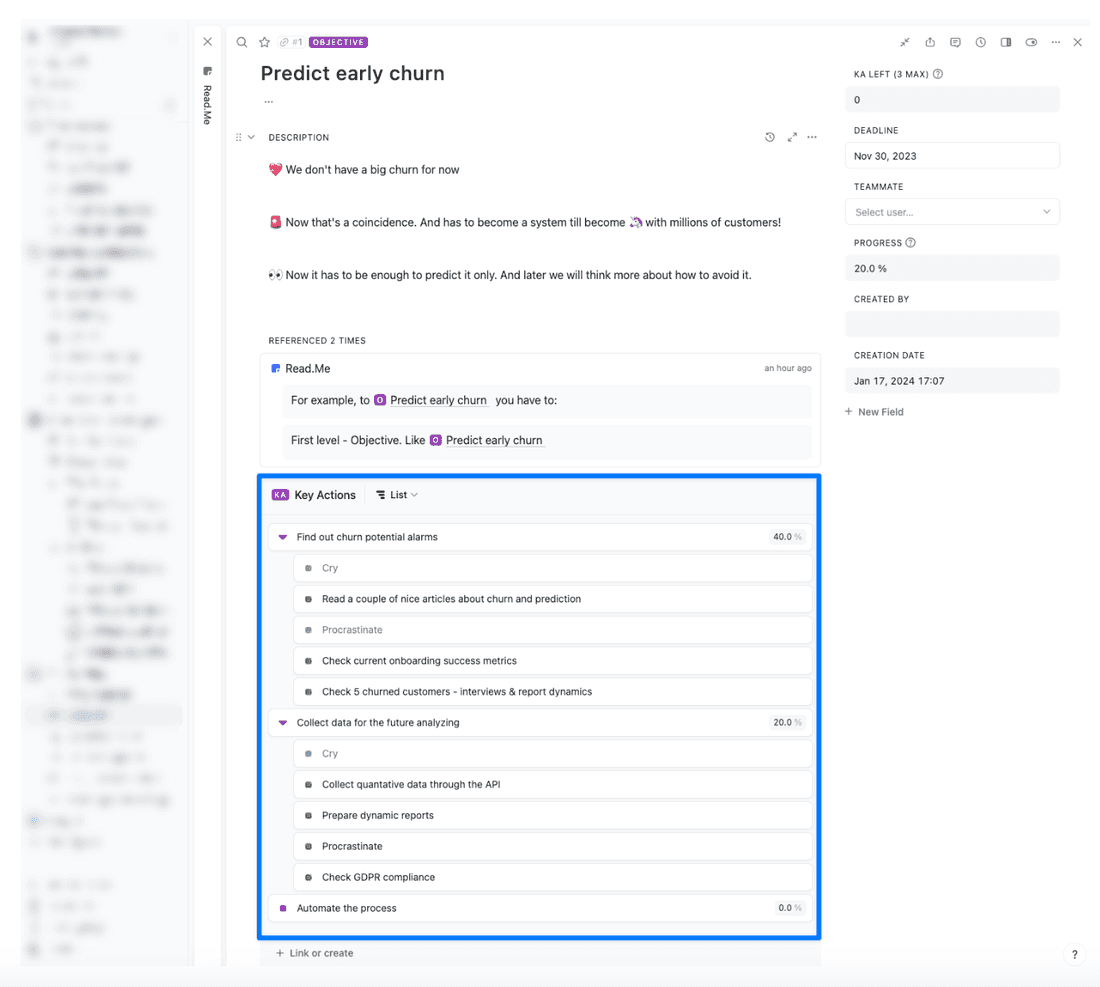The Top 7 Skills for Prioritizing Better as a Product Manager
To remain effective, mastering key prioritization skills is essential for boosting productivity. This article covers 8 techniques to help PMs make decisions efficiently, manage time wisely, and focus on the most critical work. Read on to learn how to prioritize like a pro.
Why you need prioritization skills
As a PM, your task list never ends. Getting bogged down in low-impact work makes things even worse.
Most Product Managers try to fight against the deadlines using prioritization frameworks. While they’re beneficial – they often don’t solve the underlying problem behind the overwhelm you feel.
The real solution is the soft skills related to prioritization. They empower you to:
- Increase your productivity: More prioritization skills means less paralysis while looking into your calendar
- Manage your time effectively: Instead of racing against the clock, you dictate the time needed to complete each task. Powerful, right?
- Reduce stress: Less mess = Less stress. It’s called Math, look it up.
- Achieve goals faster: Doing all at once makes you lose the feeling of progress. Prioritization skills bring it back.
- Enhance focus and concentration: Say goodbye to that screaming in your head when you don’t know which task to complete first.
A strong set of prioritization skills helps you align priorities with stakeholders and determine the order of execution.
What are those skills and how can you learn them? Let’s see:
Boost your productivity with these tips:
Make effective decisions
As a PM, you constantly need to make decisions between multiple complex options. Knowing where to put your attention first (and why) will save you from analysis paralysis. Here’s a simple decision-making flow developed by PhD. Kristina Guo from the University of Hawaii-West Oahu:
- Define the problem: Clarify the reasons why a situation is a problem. What should or could be happening about it?
- Establish the criteria: What do you want to achieve in your decision? What outcomes do you expect from your decision?
- Consider all the alternatives: What actions and choices can take you to the desirable criteria?
- Identify the best alternative: Which alternative is the best based on your experience, intuition, and experimentation?
- Develop and implement a plan of action: How are you going to implement the action and monitor the progress?
- Evaluate and monitor the solution and feedback when necessary: What could go wrong? What could you do to fix the problem?
The first letters of each action create the name of this model: DECIDE. It should help you develop a strong decision-making skillset and prioritize tasks more effectively.
Be assertive
Saying “no” can be uncomfortable. But if you avoid it every time, you’re setting yourself up for getting crushed under all the responsibilities involved in your job.
So, pull your socks up, and decline respectfully when things are piling up too quickly. Don’t be afraid to assert your point of view on priorities, whether with executives, engineers, or customers.
Christine van Wyk, Senior Product Manager at LabXChange, makes a brilliant comparison between assertiveness and pasta:
One bite of a pasta piece, and I immediately know whether it is perfectly cooked. Al dente. The perfect texture for cooked pasta. The perfect combination. Tender, yet firm.
I think of al dente pasta when I think of an assertive communication style.
A few tips to improve your assertiveness include:
- Understand why you’re not assertive: Dig deeper to understand your lack of confidence while sharing your opinion. Understand the reason behind setting high standards for yourself. Self-awareness about your biases can facilitate standing your ground, without coming off as hesitant.
- Back up your recommendations: “Because I say so.” is never a good argument. Replace it with clear, logical explanations behind prioritizing one thing over another and advocate for them while talking to stakeholders. If possible, use data to enhance your arguments.
- Fake it ‘till you make it: Assertiveness is a skill, not a character trait. Train it like a muscle – without lifting anything heavy, just in case the conversation gets heated. Focus on clear communication, breathe deep, and speak your mind calmly. The more often you do it, the easier it’ll get.
Organize your day with scheduling
We know sometimes your days look something like this:

But there’s a way to avoid getting a “Top Voice in Racing Against the Clock” badge on LinkedIn.
It’s called time blocking, and you can use it to structure your calendar to dedicate deep work blocks around top priorities.
If you attend daily meetings (and let’s be honest, which PM doesn’t?), you can schedule the meetings strategically to maximize the time between them for getting things done:

To make sure you fully benefit from this method, set up a routine for organizing your work. You can do it either weekly or daily – depending on how predictable your week is.
If you use a shared calendar in your company, time blocking can be a subtle way to let other team members know you’re unavailable when Brenda from HR wants to show you her Chihuahua’s new winter shoes.
Remove distractions
An average smartphone owner receives 80 notifications per day.
An average PM: the limit does not exist.
Email, Slack, social media, the latest sales on Amazon – they’re all keeping you away from getting stuff done.
They also create an opportunity for context switching. It’s the event of jumping from one app, project, or task to another. This distraction hurts productivity and increases overwhelm, making us simultaneously more stressed and less productive.
If you often find yourself shifting your attention between multiple things, here are a few steps to Create a distraction-free environment:
- Set your status as “Do Not Disturb” on communication channels.
- Turn off notifications and schedule batch times for clearing these.
- Set up integrations between apps whenever possible.
- Set one goal for each session of work (more on that in the next section)
This will help you stay on track and save you from ruminating about your boss’ latest message where he didn’t add any emoji in the end…
Set realistic goals: (1-3-5, Fibery pitch)
Productivity gurus always talk about goals. You should set them, pursue them, and achieve them.
The problem is – nobody tells you how. Except for us, of course.
The key to smashing your goals lies in clarifying the exact next steps you should take to achieve them.
For this, you may use the 1-3-5 rule. It lets you organize personal (or team-level) work by turning big targets into bite-sized pieces of work.
Say your goal is to predict early churn for your app. After using the 1-3-5 rule, it’ll look like this:
- 1 Objective (your main goal): Predict early churn
- 3 Key Actions (how to achieve the goal):
- Find out churn potential alarms
- Collect Data for the future analysis
- Automate the process
- 5 Tasks (real execution) for each Key Action
The finalized goal will look like this:

If you want to try this method yourself, grab a free 1-3-5 Rule Template we built in Fibery.
Delegate
As Steve Jobs once said:
“Delegation is not a sign of weakness, but of strength.”
If a task doesn’t require your specialized skills and can be owned by others – delegate it.
This isn’t just about you passing work to others. A fellow team member with less experience might appreciate the learning opportunity you give them by handing a task over to them.
To do it effectively, though, you need to follow a few rules:
- Explain why you’re delegating: Let the person know why you chose them to delegate to. This will help them understand the opportunity in it.
- Provide the right instructions: Even while delegating, you need to communicate your expectations clearly.
- Provide resources: Ensure the person has access to the tools and knowledge they need to complete the task.
- Say “thank you”: Basic manners never go out of style.
Delegation helps you free up your schedule and empowers your fellow team members to succeed in their roles. Win-win!
Eat the frog first
No, there’s no need to eat amphibians (unless you’re French, but keep that for lunch).
“Eating the frog” means doing your most important, yet often most disliked, tasks before you start procrastinating (we feel you).
Knock out top priorities when you have the most energy. For many people, it’s in the morning, but if your focus and creativity thrive right after the fourth coffee of the day – do what you have to do.
The point is: don’t put off important work - getting it done eliminates drag on your momentum.
Conclusion
Equipping yourself with strong prioritization skills will transform your effectiveness as a product manager. Detailed project planning, ruthless focus on the vital few over trivial many, and disciplined execution of top tasks will drive greater results. Try these tips above to level up your prioritization. Focus on high-impact work and become a productivity master.
Psst... Wanna try Fibery? 👀
Infinitely flexible product discovery & development platform.